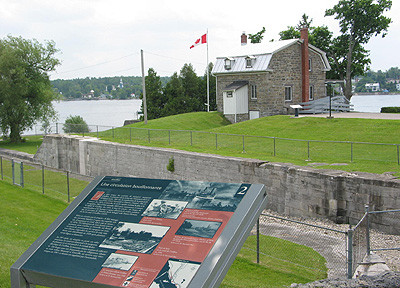
ST. ANDREWS EAST
The municipality of Saint-André-d’Argenteuil, which includes the former villages of St. Andrews East (Saint- André-Est) and Carillon and the parish of Saint-André-d’Argenteuil, is a wonderful place to spend a day or two. There is so much historic architecture in this area, and amid such a lovely setting, that visitors will have no trouble finding sights to see. 
The village of St. Andrews East (Saint-André-Est) is one of the oldest in the Ottawa valley. Dating to about 1800, the village was founded by Scottish immigrants, who named it after the patron saint of Scotland. The early homes here recall this Scottish heritage, as well as the influences of later New England and French Canadian settlers. One of the oldest buildings in St. Andrews East is the gristmill built by Patrick Murray in 1802.
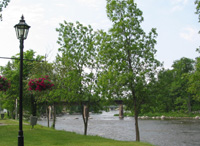 Interpretive plaques have been erected (in French) by the municipality at many local sites, including the Anglican Church (1819); Mac Donnell House (c.1830); and others. One plaque describes the lives of two local notables, Sir John Abbott and his cousin, pioneering woman doctor, Maude Abbott. The Historic Sites and Monuments Board of Canada has erected a monument commemorating Canada’s first paper mill, built in St. Andrews East in 1805.
Interpretive plaques have been erected (in French) by the municipality at many local sites, including the Anglican Church (1819); Mac Donnell House (c.1830); and others. One plaque describes the lives of two local notables, Sir John Abbott and his cousin, pioneering woman doctor, Maude Abbott. The Historic Sites and Monuments Board of Canada has erected a monument commemorating Canada’s first paper mill, built in St. Andrews East in 1805.
The North River passes right through the village, and the local riverside park is a pleasant stop for a picnic.
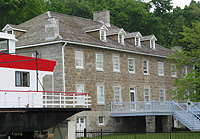 CARILLON VILLAGE
CARILLON VILLAGE
A couple of kilometres up the road is the village of Carillon, located on the mighty Ottawa River, and now a part of Saint-André-d’Argenteuil. Carillon, too, is charming and rich in history, and a number of sites are marked by interpretive plaques. A major attraction here is the old military barracks, dating to 1836, and now home to the Argenteuil County Museum. Built of cut stone in the splendid Georgian style, the barracks is a federally-designated historic site. 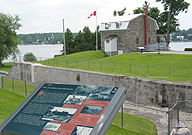
Just up the street from the museum is the famous Carillon Canal, a National Historic Park that commemorates the military canal built here in 1833. The grounds of the park are beautifully landscaped and include several period buildings, including the Collector’s House (1843), which serves as a seasonal interpretation centre. Within sight of the Canal is the impressive Carillon dam and power station, run by Hydro-Quebec. Tours of the facility may be arranged. 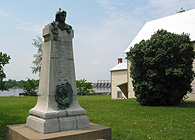
A small park next to the Catholic Church overlooks the dam. There are tables here for a picnic, and a bronze monument commemorates the famous Battle of Long Sault, a skirmish in 1660 between a party of French, Huron and Algonquin soldiers under the command of Dollard des Ormeaux, and a group of Iroquois preparing to attack Montreal. Dollard and his men lost their lives, becoming heroes of New France in the process.Finally, for those wishing to cross the Ottawa River, a small car and passenger ferry operates between Carillon and Pointe-Fortune. The terminus is near the museum, and the crossing takes only a few minutes.
(Photography by Matthew Farfan)